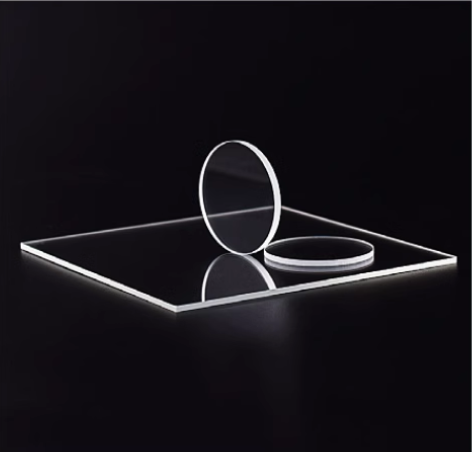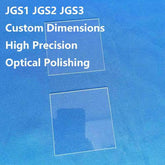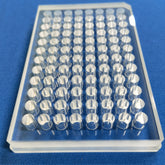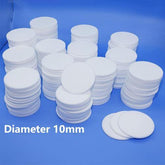Application of sapphire lens in consumer electronics market
Sapphire lenses, with their unique physical characteristics and optical properties, are of pivotal significance in consumer electronics market. This transparent crystal, synthesized from aluminium oxide powder in a high-temperature vacuum environment, exhibits numerous advantages of natural sapphire. In addition to this, it demonstrates remarkable competitiveness in terms of infrared light transmission, scratch resistance, and other aspects, providing significant advancements in the protection and functionality of smartphones, smart watches, cameras, and other equipment.

1. Infrared light transmission
Sapphire lenses exhibit high transmittance in ultraviolet, infrared and visible wavelengths, which makes them ideal for many high-tech devices. In the domain of consumer electronics, the increasing functionality of devices such as smartphones and tablets has led to elevated performance requirements for components such as cameras and sensors. Sapphire lenses, with their excellent infrared light transmission, significantly enhance the image quality of cameras, particularly in nocturnal or low-light conditions. This enhancement in image capture facilitates a more precise and natural depiction of details, thereby ensuring superior clarity and fidelity in the final image. In addition, in infrared communication, thermal imaging and other applications, sapphire lenses have also demonstrated unparalleled advantages, providing strong support for the versatility of the device.
2. Scratch resistance and durability
With a Mohs hardness of up to 9, sapphire is renowned for its exceptional scratch resistance and durability. In devices that are utilized with high frequency in daily lives, such as smartphones and smart watches, the screen and lens are frequently the components that are susceptible to damage. When the sapphire lens serves as a protective cover plate, it exhibits excellent scratching resistance from hard objects such as keys and coins. Additionally, it facilitates the maintenance of the cleanliness of lens over an extended period of use, thereby contributing to extending the longevity of the devices. Furthermore, sapphire lenses possess a high level of resistance to abrasion and corrosion, and maintain consistent performance even in harsh environments, providing users with a superior usage experience.

3.Wide application in consumer electronics market
The progression of science and technology, alongside the enhancement of consumer demand, has contributed to the increased utilization of sapphire lenses within the consumer electronics market. In the field of smartphones, sapphire lenses have become a significant selling point for certain models, which not only enhances the overall texture of the phone, but also provides users with a more secure and durable screen protection. Concurrently, sapphire lenses have become a standard feature in smart watches, tablets and other devices, contributing significantly to the functionality and aesthetic appeal of these devices. Furthermore, the utilization of sapphire lenses has become increasingly prevalent in camera protection lenses, fingerprint recognition modules and other critical components, thereby ensuring enhanced stability and security of the device.
The rapid development of 5G, the Internet of Things and other technologies is poised to engender significant expansion in the domain of consumer electronics. Sapphire lenses, with their distinctive physical properties and optical performance, are set to assume an increasingly pivotal role across a wide range of applications, including smartphones, smart watches and smart homes. At the same time, as consumer requirements for product quality and appearance are continuously improving, sapphire lenses will also become a significant component in enhancing product competitiveness and brand image, thereby providing users with a safer, more durable and high-quality experience.






